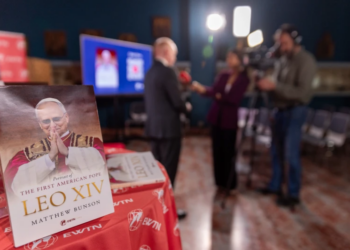Palm Beach slows down after Easter, with traffic notably easing up through the month of May as the largely seasonal community packs up for Europe or the Hamptons. That, however, was no stumbling block for the Palm Beach Symphony, which presented an extra late-season “encore” program that sold out, defying all seasonal demographic trends.
As high-school graduates pose on chic Worth Avenue to celebrate their scholastic achievements, this encore concert gave a nod to education with its opening performance of Brahms’s Academic Festival Overture. Composed in 1880, it celebrated Brahms’s honorary doctorate from the University of Breslau, an institution whose premises are now in Poland. Brahms, who disliked ceremony, had confined his thanks to written remarks and had to be coaxed to compose anything more substantial. In a tongue-in-cheek gesture following a mock-somber opening, he based the score largely on German fraternity drinking songs, a tribute that gives the piece a lighter touch than more solemn academic marches. Its triumphant ending quotes the melody of the Latin Gaudeamus igitur graduation song.
Palm Beach livened up the performance further still by inviting 108 local musicians, ranging from middle-school students to retirees, to join its seventy-three regular players, with instrumentalists doubling up (or more) to play the prescribed orchestral parts. The mammoth 181-member ensemble came together in admirable harmony under the steady baton of the music director, Gerard Schwarz. But beyond the music, the exercise was great fun, a praiseworthy celebration of community, and a fine acknowledgement of the symphony’s outreach work, which reaches dozens of schools and tens of thousands of students.
Resetting the stage for the next piece, Chopin’s Piano Concerto No. 2 in F Minor, took some time, which Maestro Schwarz used to interview some of the extra players. He then returned to the podium to lead the piece, which the Polish composer produced in 1830 at age twenty. The soloist was Kevin Kenner, an International Chopin Piano Competition laureate and Schwarz’s colleague at the University of Miami’s Frost School of Music. The concerto—one of only two Chopin wrote for his instrument—looks back to the innovations of Haydn, Mozart, and Hummel to give the soloist an expository role to which the orchestra must yield. Kenner acquitted himself well through the brash first movement, marked “maestoso,” but his finest and most delicate playing—perhaps the most in character with Chopin’s personality—came in the exceptionally beautiful harmonies of the slower second movement, marked “larghetto.” Kenner picked up in the Allegro vivace finale before showcasing his virtuoso talent in his encore, Chopin’s Grande Polonaise Brillante.
The concert’s second half was devoted to Beethoven’s celebrated Symphony No. 5 in C Minor, which premiered in an arduous concert of over four hours’ length in 1808 after developing in the composer’s mind since 1804. Its signature four-note opening was not meant, as legend had it, to convey “fate knocking on the door,” but it has become classical music’s most celebrated motif, used for, as the program notes point out, the introduction of BBC broadcasts to Nazi-occupied Europe.
The symphony is one of the most frequently performed in the repertoire. Palm Beach heard it only a few weeks before when the National Symphony toured Florida under its music director, Gianandrea Noseda. Noseda’s agile and rather intellectual approach had great merit, but Schwarz has an almost preternatural sensibility that pervades his conducting in the high Romantic repertoire, stretching from Beethoven to Mahler. His approach avoids bombast in favor of insight, reflection instead of weight. The performance was of a quality that should be recorded for posterity.
















